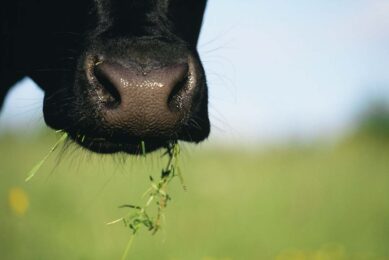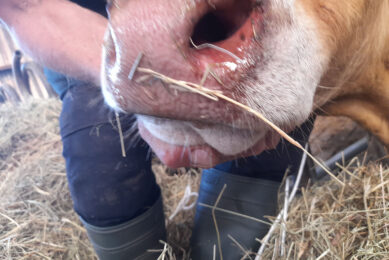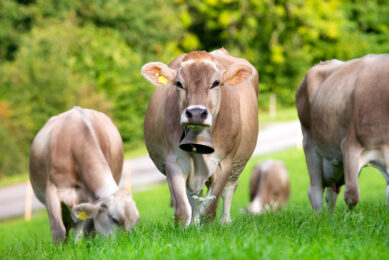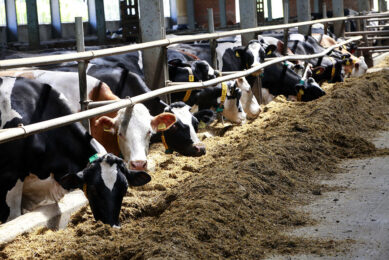From a cow’s point of view
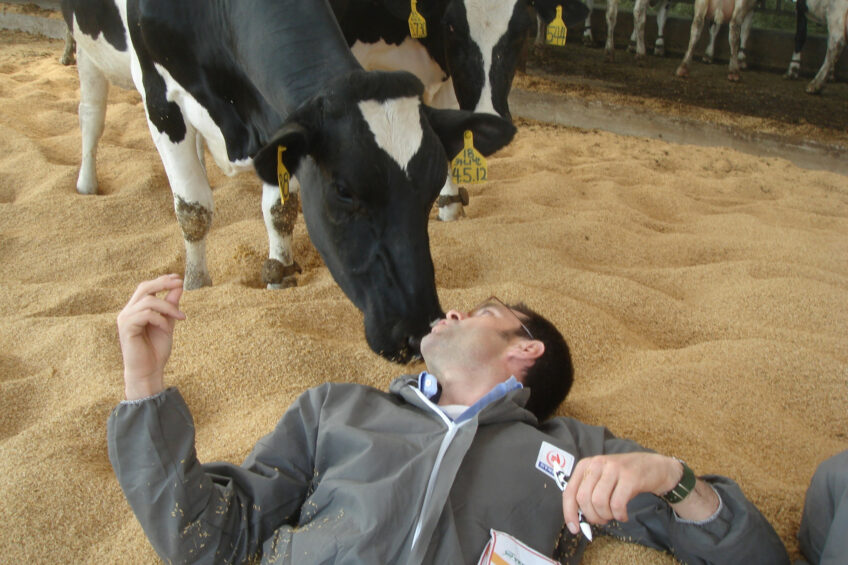
Many dairy farmers are familiar with the CowSignals concept. A recent addition to this training method is stress-free stockmanship. Dairy Global talked to the founder of this concept, Joep Driessen, to find out more.
A cow is constantly giving away signals to the farmer. The way she eats, stands, lies down, ruminates, has her ears positioned, etc. All these signals mean something and can mean discomfort, a disease, stress. It is therefore important that a dairy farmer is aware of these signals in order to act quickly. The importance of this ‘basic’ stockmanship skill triggered Joep Driessen, a dairy veterinarian from the Netherlands to develop a training method, called CowSignals, together with colleague Jan Hulsen.
The aim of this concept is to prevent disease among dairy cows and to prolong their lifetime to have more lactations. The concept is based on live training, video courses and books. You can certainly say the concept of looking at cows is taking off in the global dairy community. Today, more than 400 advisors and trainers in over 50 countries are applying the concept.
Dairy Global: When did you start with this concept and what has changed since?
Joep Driessen : “In 2000, we introduced the concept at a farm workshop and developed the basic CowSignals training. We have already done 3 try outs with friends and farmers and our former university professor Arie Brand. We asked ourselves how to prevent disease and how to prevent having a tunnel vision? We realised that great steps can be made to have the cow’s point of view and let your cows do the talking. We came up with the CowSignals Diamond, an infographic that highlights that feed, water, light, air, rest and space are all linked to cow health. In 2007, I founded the CowSignals training company and also started to train trainers all around the world. Since the introduction of the concept, we keep on learning new things at the workshops. For example, I learnt to see more details from the cow and in the barn. Think of wounds on back bone and ribs. But the basics of the training is still the same.”
How do you explain the worldwide success of the concept?
“It is successful because it is a very practical approach. We try to make it really simple. It helps that everybody loves to look at cows, which makes a workshop a nice activity for everyone. After an on farm workshop (normally with around 10 farmers or advisors) we draft a list of things that need improvement. And some of these things can be improved in a cheap and simple way. We surprise people with simple things they never thought of and they have never seen before. Some dairy farmers say: you gave me a new set of eyes.”
What falls under the concept nowadays?
“Since 2000 we do around 150 training days per year, divided between myself and our team of 5 freelance CowSignals trainers from the Netherlands. Up until now this is over 2,500 training days! The trainers are all veterinarians and specifically trained in housing, feeding and management. The training we do nowadays is based on (mostly) full day trainings, with groups of 5 to 20 people. We also do many lectures at large conferences around the world. Since 2007, we have trained 400 certified CowSignals trainers in 55 countries. They are using the concept to train and advise dairy farmers and colleague advisors. Some do one workshop per year, others do 50. And last but not least, we have a great book series about the concept (next to CowSignals, there is HoofSignals, YoungStockSignals, Dry to fresh, Udder Health, Fertility, Building for the cow, Robotic Milking, FeedingSignals, Stress-free stockmanship). The first book CowSignals sold over 200,000 copies and has been translated into 35 languages since 2003. So it is fair to say that we have reached around half a million dairy farmers with all these products under the flag of CowSignals. Still 10 million to go.”
Looking at cows seems fairly easy, or am I underestimating?
“Of course, looking at a cow is easy, but you have to know what to look for and how to interpret the signals. Dairy farmers often do not see the obvious, such as waiting cows and wounds. They do not understand cows well enough. A cow is a prey animal and also an animal that lives in herds. Many farms have dead end roads in barns for example. This means stress for a cow as she feels she has no escape route when needed. Another thing; farmers do not realise how important it is for cows to be able to rest. A resting cow can produce one litre of milk more per extra hour of resting.”
Can it be used on every type of farm and cow?
“Yes, certainly. We do these trainings on dairy farms around the world, but we do adapt for the type of farm and circumstances. For example, we have a special training for grazing herds (to be found in New Zealand, Chile, Ireland, Costa Rica). But we also do workshops at beef farms and even have a tailored programme for sheep. We work with small herds of ten cows in Austria, Switzerland and Kenya, to herds of 20,000 in China and Saudi Arabia. We started off on family farms in the Netherlands and Europe and also gained a lot of experience with cows that are milked by robots. Farms are different but the concept is universal.”
What are the signals to keep in mind when cows are being milked by robots?
“Larger farms with milking robots are having an effect on the way cows behave. Robot milking gives the cows more freedom and it is therefore important to give cows free access to feed, water, rest and milking. Many people do not understand this yet. From a farmer’s perspective, there is less time to watch cows. So it is even more important to learn to see the risk animals, waiting cows and abnormalities better. The checklist and Diamond infographic that we use in our training can help to check for the most important things everyday: rumen fill of fresh cows for example. Well trained robot farmers can now do 150 cows alone, because machines help them and because cows do not get sick anymore. But this requires excellent barn design and housing conditions. 90% of the cow beds in free stalls are too small.”
Stress-free stockmanship is the latest addition to the concept. Why this and why now?
“Lameness is the biggest health issue at dairy farms and stress is a big factor in this. We learn how to move a cow without stress, which will lead to less lameness and more milk production. Many farmers do not train their heifers properly. In our stress-free stockmanship training (see box) module we teach the dairy farmers that they should act like a friend to the young stock and act as a leader in the herd at the same time. We also learn how to respect the flight zone of the animals for example.”
Stress-free stockmanship: Good for farmer and cow
Still a lot of accidents are happening while working with cattle. Accidents that can partly be prevented by learning how to handle cows without stress. Joep Driessen believes that a lot of people who work with cattle don’t know enough about how to handle cows safely and without stress. This is why he wants to provide more knowledge on this topic and has just released a new video course called ‘Stress-free stockmanship’. But why this topic? Australian research shows that a docile herd can reduce the percentage of lameness with 42% and increase the milk production with 1.3 litres per day. Also, stress-free stockmanship can increase working pleasure. People who don’t enjoy their work, are more often rude and unpredictable to their cows. This causes fearful and aggressive animals, reducing working pleasure even more. It’s a vicious circle that can be broken with the right training. Thirdly, stress-free stockmanship is important to prevent accidents with cattle. Stress-free stockmanship means handling the animal with respect. No hitting and no shouting. It starts with understanding the animal and respecting her personal space. If you learn to understand the cow’s nature, you can lead her with just your body language. It’s also about awareness of your own behaviour. Like one of the founders of stress-free stockmanship, Bud Williams, said: “No matter how good you are at reading the animal, the animal will always be better at reading you.”
Join 13,000+ subscribers
Subscribe to our newsletter to stay updated about all the need-to-know content in the dairy sector, two times a week.





